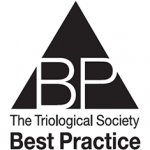Debate remains over the safest and most definitive operative approach: the Caldwell-Luc (CWL) approach, the endoscopic sinus surgery (ESS) approach, or a combination of the two.


Debate remains over the safest and most definitive operative approach: the Caldwell-Luc (CWL) approach, the endoscopic sinus surgery (ESS) approach, or a combination of the two.

ESS can be considered in patients that are refractory to medical management as a non-destructive option, as risk to hearing is low.

Patients with isolated face and lip angioedema, with no signs/symptoms of laryngeal and pharyngeal involvement, can be individually assessed for the need of laryngoscopy.

Available data suggest that complication rates of alloplastic implants are similar to those seen with autologous costal cartilage and may be acceptable in select patient populations.

There are no data to suggest that delayed tracheostomy offers a morbidity or mortality advantage.

The existing literature still suggests that the highest locoregional control and survival rates are achieved with surgery.
Both septoplasty and rhinoplasty are associated with mostly mild pain, and postoperative opioid requirements are quite low.

Management remains controversial because there is no universally accepted consensus on the threshold for surgical intervention, appropriate treatment strategy, frequency of surveillance, and ablative versus excisional management

Chemoprophylaxis should be utilized in the postoperative period for vestibular schwannoma surgery.

Postoperative antibiotic prophylaxis in clean-contaminated head and neck free flap reconstruction cases is most likely sufficient and recommended for use less than 24hours from wound closure.